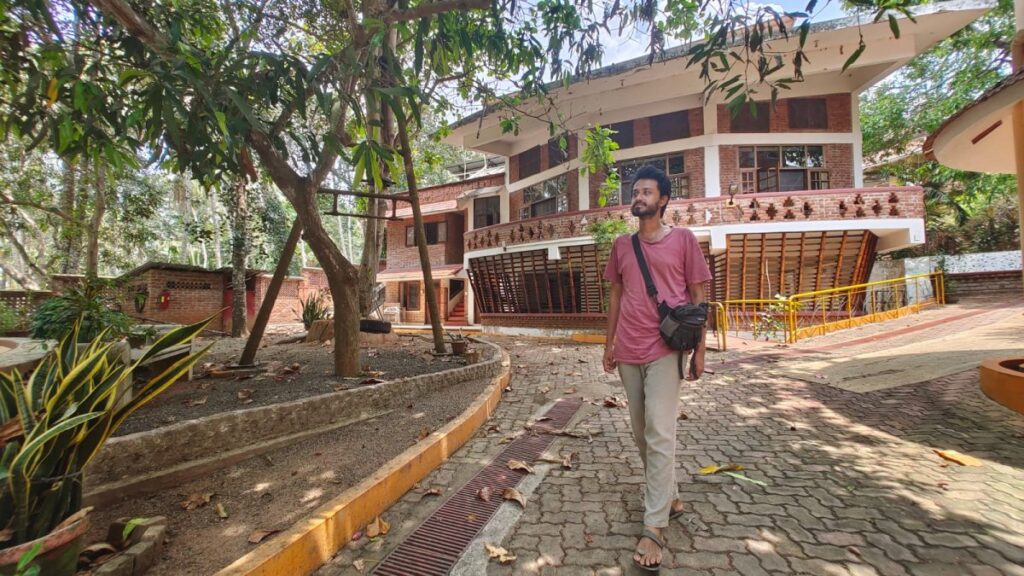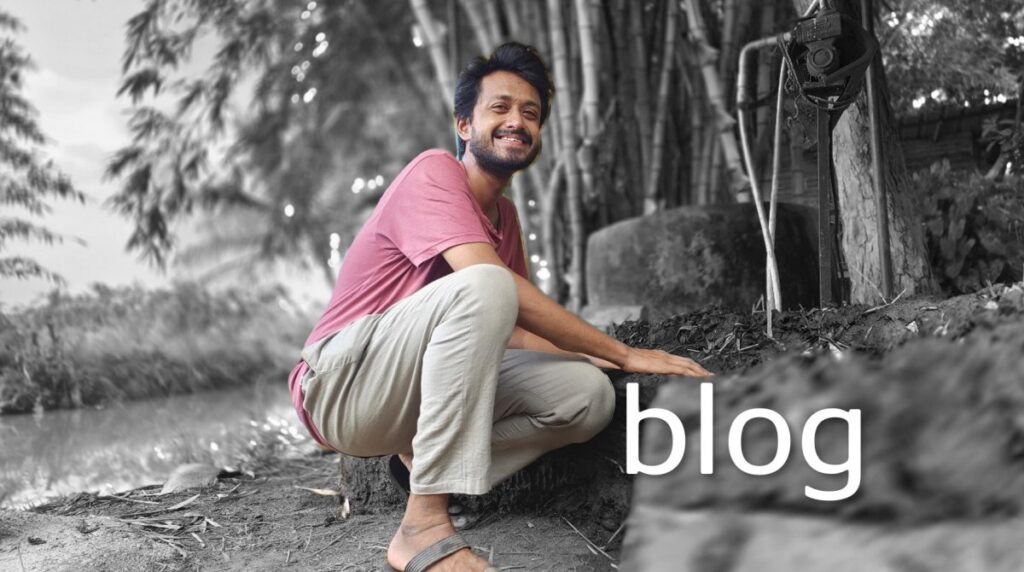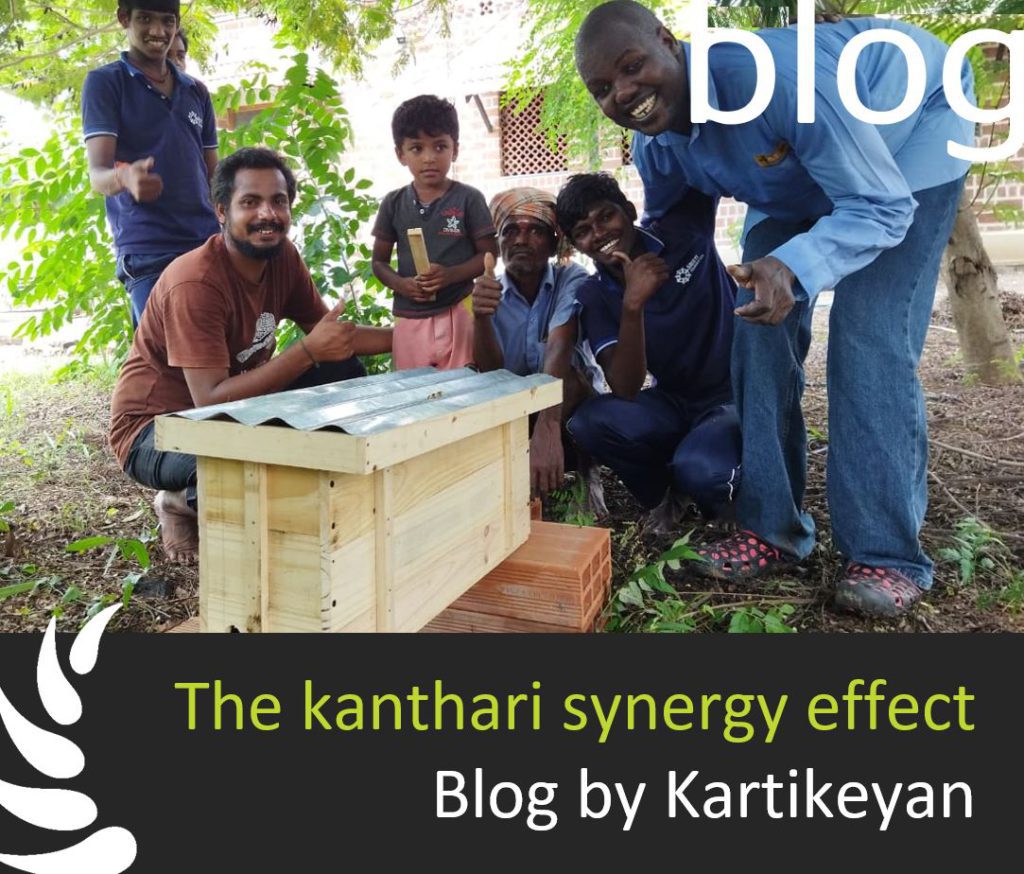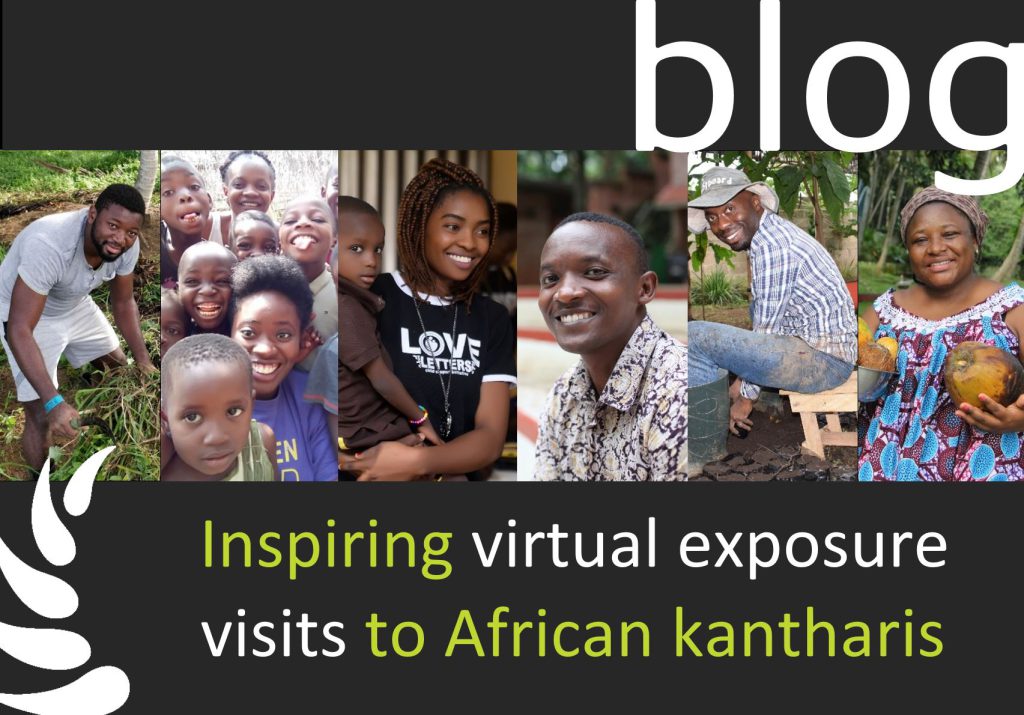Guest- blog: Sohan Tari from Mumbai, a student of the Travellers University is volunteering at kanthari for 10 days and herewith we share a blog post he wrote. Enjoy.
Urban Roots, Natural Bonds
Even though I grew up in the urban area of Mumbai, I was fortunate enough to have several experiences that kept me connected to the natural environment. My father used to take me on bird-watching trips to Karnala Bird Sanctuary on the outskirts of Mumbai, every weekend. I eagerly waited for these weekends so that I could learn from him about birds, climb trees and play with insects, frogs, snakes, crabs and everything that moved. Every few years, whenever our financial condition would allow us, he would also take my family on trips to ecologically sensitive regions all over India. I remember being face to face with a pride of lions at Gir Sanctuary, scuba diving with fish and corals at Lakshadweep, playing with octopuses at Pirotan Islands, being attacked by a Sloth bear at Madhumalai Sanctuary and many more close interactions with nature. My curiosity and bond with nature grew because of these experiences and it is these first interactions with the wild that probably subconsciously made me sensitive to and interested in ecology. Back at home, being an extremely introverted and shy kid with no friends, I would spend long hours drawing, sketching and painting the birds, animals, plants, landscapes from guidebooks, photographs and experiences. At school, I could not relate much with what was being taught and was a below average student, so I gradually decided to focus on my interest in creative arts. Rest of the time, I used to be glued to television watching nature shows on Discovery Channel and Animal Planet and my first ever dream was to grow up to become a wildlife filmmaker and presenter like Steve Irving, the crocodile hunter. However, like in any typical Indian household, the career options accessible to me were pretty limited and I lost these dreams somewhere.
Navigating Paths: From Architecture to Ecological Pursuits
Since I was interested in arts, I decided to pursue architecture as it was the only option that seemed plausible at the time. But, I soon found out that my architecture education was a stark contrast to my nature-immersed childhood and I soon got fed up with the unhealthy, insensitive, and ecologically destructive ways in which architecture was being taught and practiced. I ended up taking several gap years from college to explore alternative options. I took nine years to complete a five-year course. During these gap years, after feeling quite lost in the beginning, I soon started to enjoy the freedom to explore. I decided to say yes to every opportunity that came my way, and thus I was introduced to the idea of ‘traveling with a purpose’. I ended up volunteering and working on several ecological and art-related projects and started slow-traveling to places that offered me such opportunities. Since I did not have a lot of financial support from home, I started exploring alternative forms of non-monetary economies like service exchange, barter, gift economies, etc., which not only opened up a lot of learning opportunities for me but also helped me develop a really strong bond with various people and communities in different places. It was during this time that I fell in love with cinema and decided that I wanted to pursue film-making in the future. Afraid that film school would be the same as architecture college, I decided to learn it on my own. I could not afford to buy a camera so I began watching one film a day and reading about cinema to study it until I could get one.
A Shift Towards Ecological Living and Learning
During this time, I stumbled upon Dharmalaya Institute of Compassionate Living in Bir-Billing, Himachal Pradesh, which practiced ecologically sensitive natural building. I started interning there under the guidance of a renowned self-taught eco-architect, the late Didi Contractor, and the teachers at the institute, who had a huge impact on me and turned my life around. Here I began falling back in love with architecture as we worked on-site with our hands, instead of in air-conditioned spaces on paper. Every small and big decision was weighed according to the short and long-term effect it would have on different social and ecological systems. I found the holistic way of education, work, and living, hand-in-hand with nature, extremely nourishing, unlike the often toxic and destructive conventional system. I soon started developing an interest in social and ecological design and began learning about permaculture, natural farming, forest design, rainwater harvesting, alternative appropriate technology, etc. I eventually took up a role as a facilitator and led several hands-on experiential workshops on compassionate and sustainable living, which got me interested in alternative approaches to education.
Pandemic Reflections: Revisiting Childhood Dreams
In 2020, when the global Covid pandemic hit I was back to college in Mumbai. Being cooped up inside my room after living in the middle of a forest for one and a half years started affecting my mental health. However, to cope by reconnecting with a natural environment, I began watching every nature documentary I could get my hands on. It was around this time that I remembered my childhood dream of wanting to become a wildlife and ecological filmmaker and decided that I finally wanted to pursue it. It was fascinating to me how things had come full circle and funnily enough, I had picked up some of the necessary knowledge and skills in art, design and filmmaking, and ecology along the way. I took up a few small jobs to save up enough money and I was finally able to purchase a camera about 6 years after I had first decided to pursue and explore various livelihoods that fall within the intersection of art and ecology.

Embracing the Journey: Towards Socio-Ecological Impact
For the past few years, I have been exploring the use of different forms of art, design and media, for socio-ecological impact in different regions of India like Uttarakhand, Rajasthan, etc. Last year I came across the ‘52 Parindey Fellowship’ by ‘Travellers’ University’. This fellowship facilitates and encourages the youth in the pursuit of ‘Alivelihoods’, which are fulfilling, meaningful, and regenerative livelihoods, oriented towards social, ecological, and personal wellbeing. In other words, livelihoods that make one feel alive, joyful, and content while pursuing it. However, what intrigued me the most was that this fellowship uses travel as a pedagogical tool for learning, and the travelers (fellows) stay with, learn from, and document the personal and professional journeys of people who are already engaged in the traveler’s selected Alivelihood and are successfully sustaining themselves. To understand and learn in-depth about my Alivelihood of “Art and Ecology’, I am currently traveling across India to learn from individuals/ groups/ communities working as naturalists, environmentalists, conservationists, etc; and also, artists, designers, educators, and filmmakers working on ecological issues.
Volunteering at kanthari
During my journey, I happened to visit Kanthari to meet my friend Ansa and I was intrigued by the hands-on activity of cleaning the lake from the mud balls and the invasive water plants like water hyacinth. Whilst doing this, I had several interesting conversations with Sabriye, the co-founder of Kanthari which contributed immensely to not just my learning journey about my Alivelihood, but also much beyond. I learned a lot in just a short period of 3 days, and I saw a lot of possibilities of where I could apply my skills and experiences on the campus which in turn would again contribute further to my learning so I decided to come back to volunteer at kanthari. Following what I have been doing so far, I asked Sabriye if she could teach me Braille and in return, I would participate in and help out with a few design projects.
Currently, I am involved in several activities. I am designing and building a bench from mud-balls gathered during the cleaning of the lake, to experiment and test the viability of the material as a potential building material. I am also designing a permaculture farm/ garden on the hand-made island in the lake, along with Riya, a catalyst at Kanthari. Other than that, being a vegan myself, I am experimenting with the kitchen team on adding vegan meals to the menu. I usually spend the hot afternoons indoors, practicing writing in Braille. Every evening I have continued to participate in the activity of cleaning the lake and having deep conversations on a wide array of topics like education, dreams, careers, leadership, accessibility, veganism, feminism, politics, and a lot more. These discussions coupled with the method of “hot-seating” at Kanthari have not only helped shake up some of the rigid beliefs I had but also given me a lot of questions and seeds for thought which will continue growing in me as I go ahead with my journey and for years to come.
More information on programs, events, and offerings by Dharmalaya Institute of Compassionate Living and Travellers’ University can be found at https://dharmalaya.in/ and https://www.travellersuniversity.org/ – and you can find more info about kanthari here



